Sharlyn J. Lauby's Blog, page 71
February 28, 2021
The Future Workplace [Episode 5] Organizations Can Create Workplace Belonging
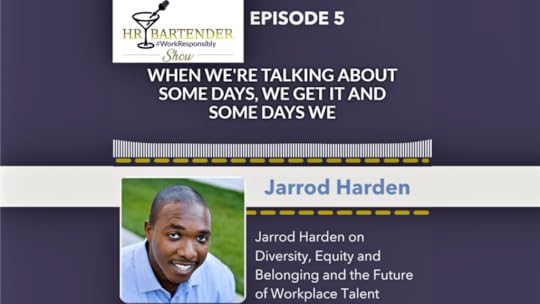
People want to know about the organizations that they support – both as a customer and as an employee.
I believe organizations want to do the right thing. Many companies spoke out last year about social and racial injustice. Now it’s time to turn those words into action. But I also know that we’re in the middle of a pandemic and economic recovery. So how do organizations create workplaces that support diversity, inclusion, equity and belonging?
In this episode, I chat with Jarrod Harden, interim head of diversity, equity, and belonging at UKG (Ultimate Kronos Group). We talk about the role employee resource groups (ERGs) can play in creating belonging. We also discuss how important it is for individuals to have a clear understanding of their personal values, including knowing when to stand up for them.
Jarrod describes his role as being a company liaison who is focused on listening to and then serving the needs of people. He’s a firm believer in the power of belonging and has been working on employee focused programs for over a decade. His first introduction into the world of diversity, equity, inclusion, and belonging was working with employee resource groups from the marketing and communications side of the business.

Employees want to work for companies that make them feel welcome. They want to work at places where they feel they belong. And when it doesn’t happen, everyone suffers. But when belonging happens, employees can bring their best selves to work and everyone is better for it.
You can connect with Jarrod Harden on LinkedIn.
Episode 5 – Jarrod Harden Show Notes
Episode 5 – Jarrod Harden Transcript
Thanks for listening to our podcast. This season of the HR Bartender show is brought to you by our friends at Ultimate Kronos Group (UKG), a leading global provider of human capital management, payroll, HR service delivery, and workforce management solutions.
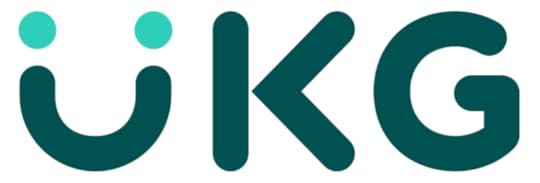
You can subscribe to the HR Bartender show on Apple Podcasts, Spotify, Google Podcasts, Stitcher, and TuneIn. And we would absolutely love it if you would leave a review.
If you enjoyed this episode, be sure to check out other episodes on our podcast page.
The post The Future Workplace [Episode 5] Organizations Can Create Workplace Belonging appeared first on hr bartender.






February 25, 2021
Performance Management Alignment: What HR Can Expect In the Year Ahead

Over the past few years, there’s been an on-again/off-again conversation about performance management, specifically the performance review. Companies have tried quarterly check-ins instead of annual reviews. They’ve tried eliminating the annual review altogether. Honestly, I’m not sure that any of these concepts has gained widespread corporate adoption.
And that’s exactly the point. Performance management – which includes the annual performance review – needs to be unique to the organization. Not a business trend. Performance management is about setting expectations, having conversations, offering guidance, and holding individuals accountable.
Last year, I think there were plenty of organizations that let performance slide given the uncertainty and unique circumstances we were under. And even though we’re not back to any form of normal, I don’t see that happening again in 2021. Organizations are going to put performance – both individual and organizational – back in the spotlight. Here are a few articles about performance management that might help organizations get their processes back on track.
Performance Management: Design a Modern Process That Creates Results
There’s more to performance management than the annual performance review. All the pieces of performance management need to work together to achieve its goal, which is better employee performance. So, even if an organization has recently completed a revamp of the performance review process, it’s possible that they will want to examine performance management again in the context of this new hybrid workplace we’re facing.
How to Prepare Employees for Getting and Giving a 360 Feedback Review
The 360 feedback review process helps employees, managers, and organizations focus holistically on performance and performance behaviors. But the implementation takes some preparation both in terms of making sure that employees give relevant feedback and are prepared to receive current, valuable feedback.
Performance Reviews: Overcoming 5 Common Biases
One of the most challenging aspects in the performance review process is overcoming biases. A bias is defined as “a prejudice in favor of or against someone or something”. While all biases are not negative, biases can have a negative impact on employee performance. Employees expect their performance reviews to be fair and free of biases.
Performance Coaching: How to Have an Employee Conversation
None of us likes to have a negative performance conversation. I always try to remember the purpose – it’s to help an employee change their behavior. If the conversation stays focused on helping the employee be successful, then hopefully it never escalates to disciplinary action. And the employee understands that the manager and the company are having this conversation because they want the employee to be successful.
The key to a successful performance management process is having one that works for the organization. If annual reviews are working for your company, great! If your organization finds that something else works, do it! In 2021, organizations are going to focus on what delivers results for them and create performance management processes that support significant results.
The post Performance Management Alignment: What HR Can Expect In the Year Ahead appeared first on hr bartender.






February 23, 2021
Human Experience Management #HXM – 4 Essential Culture Components
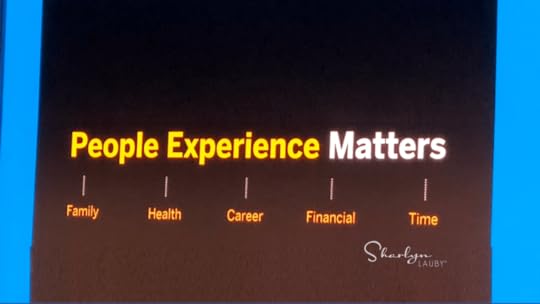
Last year, I shared a series of LinkedIn Live shows about “The Rise of HXM – Human Experience Management”. HXM was introduced at SAP SuccessFactor’s conference and is defined as being more than the employee experience. HXM is exactly what it sounds like – it’s about treating individuals as humans versus employees. But what does that mean? What are the key components to having a human experience?
I was cleaning up a few files around my office and came across my notes from the event. I had identified four key elements of delivering HXM:
Wellbeing: To confirm we’re all on the same page, wellbeing is defined as “the state of being comfortable, healthy, or happy”. I don’t believe this means 100% of the time. Realistically speaking, there will be days when we’re not any of those things. I think wellbeing is about being comfortable, healthy, or happy the majority of the time. And when we’re not, wellbeing is about feeling safe to say that. Employees should be able to let their managers know when they’re unhappy with a decision or need a lighter workload. In turn, management will support the employee and not immediately view it as slacking or shirking responsibilities.
Civility: Organizations need to have cultures where civility exists, and people are held accountable for uncivil behavior. Even if you’re the organization’s top sales producer. There’s no excuse for impoliteness and bad manners. Let me also clarify that being civil doesn’t mean that you’re not able to deliver tough conversations or share bad news. Unfortunately, we have to do that occasionally. Civility is about being able to deliver unpleasant messages with empathy, respect, and professionalism.
Learning: Over the years, we’ve all probably seen at least one article about the importance of being a lifelong learner. It’s true and we should continue to learn. Human experience management is about creating a learning culture component, where employees feel they can continuously learn and grow – whether that’s in a formal classroom learning environment or virtual self-directed development. Learning helps us grow which can benefit our wellbeing. The activity necessary for a successful learning culture is management support.
Recognition: Organizations should pay employees fairly and offer competitive benefits. That should go without saying. In addition, organizations need to demonstrate sincere recognition for work well done and goal achievement. At every level of the company. Sincere recognition should be timely and delivered in a way that’s meaningful to the individual receiving it. Recognition contributes to wellbeing. When it’s done properly, it displays appreciation and civility.
Some people might be saying, “I get it. Our organization has these things.” That’s great. What I believe takes this conversation from wellbeing programs, civility training, learning departments, and recognition programs TO human experience management (HXM) is how they are aligned. HXM isn’t about four separate programs. It’s about building all of these things into everything the organization does.
In recruitment, do hiring managers start building a positive working rapport with candidates so when they get hired, they already feel safe to bring up wellbeing?In training programs, are employees given the opportunity to practice delivering tough messages so they can do it effectively and respectfully?Does the organization regularly conduct debriefs so employees have the opportunity to talk about what they’ve learned and how they can apply it in the future?Do managers ask employees during one-on-one meetings how they like to be recognized for their work?These are just a few of the many questions that organizations might want to ask to make sure that HXM components aren’t simply programs or checklists but rather actions that demonstrate every day the human work experience.
Now more than ever, employees are looking for a real authentic human work experience. They want to know that the organization views them that way. This isn’t to say that employees aren’t prepared to do hard work – trust me, they are. But they expect to be treated as a human first.
Image captured by Sharlyn Lauby at the 2019 SAP SuccessFactors Conference in London, England
The post Human Experience Management #HXM – 4 Essential Culture Components appeared first on hr bartender.






February 21, 2021
The Future Workplace [Episode 4] Learn How to Make Your Career Thrive in Uncertain Times
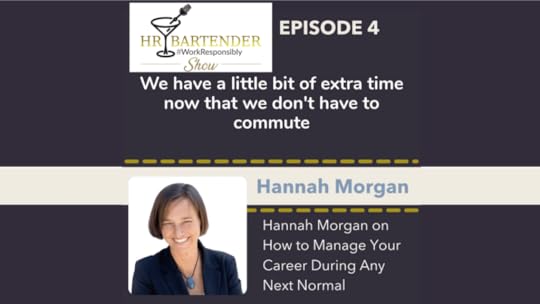
So far in this first season of The HR Bartender Show, we’ve been talking about what organizations will want to focus on in the future. Jim Stroud spoke about the future of talent. Chris Mullen discussed technology. And Alexandra Levit talked about career durability and skills development.
This episode is different because it’s focused on what you can do as an individual. Whether or not you’re looking for a new opportunity, it’s important to dedicate time to your career. In the past, we’ve often done this through networking at association meetings or conferences. But since we’re not traveling and meeting in-person, how do we still stay connected? Technology is part of the answer. And that will remain the case as we move forward.
In this episode, I’m delighted to speak with Hannah Morgan, a nationally recognized author, speaker, and job search strategist. She’s the author of the Career Sherpa blog, which is considered a top resource for job search, and “The Infographic Resume”, a step-by-step guide for creating a visual resume to get a hiring manager’s attention. And if her name sounds familiar, it’s because Hannah has shared her knowledge with us before. This article about what to do if someone plagiarizes your resume is one of my favorites.

One of the qualities that can help individuals get ahead in their careers is being able to thrive during times of uncertainty. I can definitely see organizations wanting to hire and promote people who are able to successfully manage their careers during tough times. Even though in-person networking isn’t happening right now, that doesn’t mean we can’t connect face-to-face. It does involve understanding technology and getting involved in virtual communities of interest.
Connect with Hannah Morgan
Blog: https://careersherpa.net/blog/
LinkedIn: https://www.linkedin.com/in/hannahmorgan/
Infographic Resume: https://careersherpa.net/the-infographic-resume/
Episode 4 – Hannah Morgan Show Notes
Episode 4 – Hannah Morgan Transcript
Thanks for listening to our podcast. This season of the HR Bartender show is brought to you by our friends at Ultimate Kronos Group (UKG), a leading global provider of human capital management, payroll, HR service delivery, and workforce management solutions.

You can subscribe to the HR Bartender show on Apple Podcasts, Spotify, Google Podcasts, Stitcher, and TuneIn. And we would absolutely love it if you would leave a review.
If you enjoyed this episode, be sure to check out other episodes on our podcast page.
The post The Future Workplace [Episode 4] Learn How to Make Your Career Thrive in Uncertain Times appeared first on hr bartender.






February 18, 2021
Managers: How To Ask Your Team For Feedback – Ask #HR Bartender
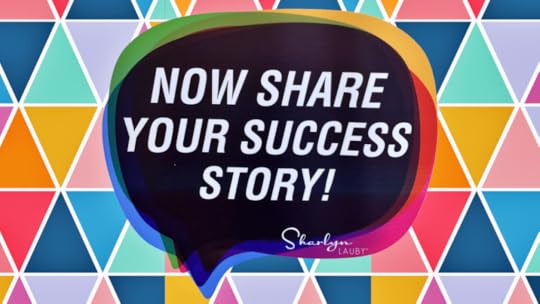
I love today’s reader question. When we regularly work in an office, it can be easier for managers to get feedback from employees. We simply walk up and ask someone. Managers might find it more challenging to get feedback when employees are working remotely.
Hi Sharlyn. I love your website. Thank you for all that you do. I have a team of three that will double in January. Everyone is working from home (per the corporate office) at least through first quarter and it may last longer.
I’d like to host one-on-one meetings with my team and get some feedback on how they’re handling working from home (i.e. How are you feeling given working from home, COVID-19, 2020 in general, etc.) But I would also like to get their feedback on how I can help them (i.e. What more do you need from me)?
Do you have ideas or opinions on how to serve this up to my team members? And what questions to ask them? The idea here is continuous improvement for me as a manager and to work on my blind spots. Thank you!
I once worked with a CEO who asked his team to give him a performance review every year. He said that he couldn’t get better and the company couldn’t get better without feedback. That’s the reason I like this reader note so much. Managers need feedback not only from their boss but their employees. If you’re a manager and want to get some feedback from your team, here are a few things to consider.
This cannot be a one-time activity. If the intent is really continuous improvement, then this needs to be a continuous activity. That being said, regular activities have to start somewhere so this is it. 2021 could be a perfect time to begin a continuous feedback activity.
Tell employees in advance. In addition to making continuous feedback a regular activity, let employees know prior to the one-on-one meeting that you’ll be asking for some feedback about how they’re doing working from home and how you can help them. That way they have time to think about what they want to share. Over time, employees will get more comfortable, but the first few times give them adequate notice.
Be prepared to do something. I’ve said it before, one of the worst things that organizations can do is ask employees for feedback and then do nothing with the information. If you’re going to ask employees for feedback – which is great – then be prepared to act on the information. This could mean stretching outside of your comfort zone.
Consider more structured questions at first. If you’re concerned about not being able to deliver on the feedback that you receive, think about structuring the questions in a way that does allow you to deliver. I’m not saying this to be deceptive. But if you ask employees to tell you what they need and someone says a new ergonomic work chairbut you’re not able to buy it…well, that’s disappointing. Maybe start with “What’s one thing the company can do – that costs under $XX?”
Ask employees for feedback – about giving feedback. After conducting all of the one-on-ones, find a time to ask employees what they thought of giving feedback. See if they have any suggestions about how to incorporate it into regular one-on-one meetings.
Employee feedback is a great thing. With employees continue to work remotely, managers might want to consider a more formal approach to getting feedback. Let employees know that no matter where they are, their feedback is valued.
Image capture by Sharlyn Lauby while exploring Austin, TX before it was frozen over (stay safe Texas friends!)
The post Managers: How To Ask Your Team For Feedback – Ask #HR Bartender appeared first on hr bartender.






February 16, 2021
The Future Workplace [Episode 3] – Employees and Employers Need Career Durability
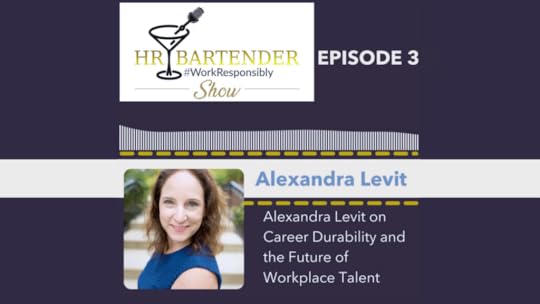
Over the past year, the word resilience has been mentioned a lot. Resilience is defined as having the ability to bounce back or recover quickly from setbacks and one of the ways we often do that is by being agile or flexible. Well, what if we put those two things together? Especially when it comes to careers.
In this episode of The HR Bartender Show, I talk with human capital analyst and futurist Alexandra Levit about the concept of career durability, which is good for both employees and employers. Career durability can be accomplished through upskilling and reskilling. And it doesn’t need a big expensive formal learning program to be successful.
Alexandra Levit’s goal is to prepare organizations and their employees to be relevant in the future business world. She’s a former syndicated columnist for The Wall Street Journal and the author of several books including the international bestseller, “They Don’t Teach Corporate in College” and “Humanity Works: Merging People and Technologies for the Workforce of the Future”. She’s regularly featured on news outlets such as CNN, ABC News, and NPR. She was named an American Management Association top leader for two years in a row and have been Money Magazine’s online career expert of the year.

Career durability is a new philosophy of learning that’s tailored to an employee’s career needs and the employer’s long-term business goals. Employees and employers are always going to be faced with some sort of business challenge. The answer to working through those challenges is learning.
Connect with Alexandra Levit
Website: https://alexandralevit.com
LinkedIn: https://www.linkedin.com/in/alexandralevit/
Twitter: https://twitter.com/alevit
During the show, Alexandra shared the five components of career durability. If you want to learn more, check out her article on “The Five Components of Career Durability” on The Workforce Institute at UKG website. Also check out this infographic from DeVry on “Employee Career Concerns for Their Future”.
Episode 3 – Alexandra Levit Show Notes
Episode 3 – Alexandra Levit Transcript
Thanks for listening to our podcast. This season of the HR Bartender show is brought to you by our friends at Ultimate Kronos Group (UKG), a leading global provider of human capital management, payroll, HR service delivery, and workforce management solutions.

You can subscribe to the HR Bartender show on Apple Podcasts, Spotify, Google Podcasts, Stitcher, and TuneIn. And we would absolutely love it if you would leave a review.
If you enjoyed this episode, be sure to check out other episodes on our podcast page.
The post The Future Workplace [Episode 3] – Employees and Employers Need Career Durability appeared first on hr bartender.






February 14, 2021
Bookmark This! Labor Law Postings Edition

Estimated reading time: 3 minutes
Compliance is an important part of human resources. It’s not the only part and it’s probably not the most fun or exciting part. But it is important. When organizations do compliance right, it sends the message to employees and customers that doing the right thing matters. Doing compliance right creates trust.
Over the past few months, we’ve written some articles about labor law postings. On the surface, this might not sound like a big thing, but labor law posters are one of the first visuals that candidates and employees have about the company. They send the message that the organization takes its compliance obligations seriously. Again, it creates trust.
3 Areas to Include in an HR Compliance Self Audit
Conducting a self-auditof labor law postings can be valuable, especially after a year where there has been a major election. There could be upcoming changes with the new administration and it’s important to know where we stand.
According to Ashley Kaplan, Esquire, senior employment law attorney for ComplyRight, 2021 is expected to be a record year for labor law poster changes. “There are hundreds of state and local laws pending that could impact posting requirements for 2021. Changes are also expected on a federal level that would likely impact the federal posters and federal contractor posters (e.g. expanded equal employment opportunity (EEO), family and medical leave provisions, and/or minimum wage increase).” By knowing where we are, this prepares us for what might be coming in the near future.
4 New State and Local Labor Laws That May Go Federal
In addition to changes in federal labor law postings, we can’t ignore the focus at a state and local level. Organizations have to remember that state and local labor laws are just as important. In this article, Kaplan shares that the volume of state and local employment law has been increasing. “There are several new state and local trends prompting more poster changes, such as increasing minimum wage rates, new employee safety and health laws, paid sick leave, and expanded anti-discrimination laws.”
Workplace Posting Requirements for Remote Workers
While there is encouraging news about vaccines, remote work isn’t going away anytime soon. In fact, organizations are starting to view it as more than a temporary solution. In a study by AND CO and Remote Year, more than 23 percent of the remote workers they surveyed said their organization is fully distributed. And technology tools like Slack are helping remote workers collaborate on projects.
The increase in remote work does raise the question, “How do organizations communicate with employees when it comes to topics like workplace compliance postings?”. I know we need to be focused on the work, but we also need to make sure all employees know their rights as required by federal, state, and local laws.
I know human resources departments have a lot on their plate right now. They’re trying to establish guidelines for vaccines and establish safe ways for bringing employees back to work. On top of all the usual things HR departments manage – like compliance. We can’t lose sight labor law postings. What might seem like a small matter sends a very big message to the workforce. It creates trust!
Image captured by Sharlyn Lauby while exploring the streets of Fort Lauderdale, FL
The post Bookmark This! Labor Law Postings Edition appeared first on hr bartender.






February 12, 2021
Competitive Recruiting: What HR Can Expect In the Year Ahead

While some industries experienced large workforce reductions, others continued to hire and grow their employee staffing levels. Healthcare is an example of an industry that is continuing to hire. With positive news about vaccines, organizations are going to start thinking about their recruiting strategy. And they’re going to start sourcing for the best talent.
Personally, I believe that high-performers and high-potential individuals will be in demand whether or not they are currently employed. There are people who have used the past few months to upskill and reskill on their own time and with their own resources. As consumers start to travel and participate in larger events, companies will need employees. The job market will once again become very competitive. If your organization hasn’t been thinking about recruiting lately, here are a few articles that you might find interesting.
Recruiting Strategy: Bots and 3 Workforce Ingredients
The workforce is changing. Workforce recruiting requires a proven strategy to be successful. Organizations need to ask: Is this a full-time, part-time, freelance, or bot job? That will determine how an organization goes about finding their workers. Do they buy it, build it in-house, have someone occasionally work on it, or automate it?
Talent Acquisition: 3 Learning Activities that Can Benefit Your Strategy
If organizations want to grow (whether that’s in size or in revenue) they need employees who are going to help them get to the next level. That means skill development and skill enhancement. It allows organizations to become more adaptable, meaning that individuals must be able to learn as things change over time. Then employees will be trainable for the job they hold today and capable of upskilling and reskilling for future opportunities.
Everything HR Needs to Know About Geofencing
When recruiting is tough, data can differentiate success and failure. If your organization hasn’t considered geofencing in the past, this might be something to think about. It does take some research to understand where to target and who is your ideal audience. But in a highly competitive recruiting market, the benefits may be significant.
Recruiting in the Era of Social Distancing
The candidate experience is still critical so develop a safe, effective recruiting process. It is possible to give candidates a positive hiring experience even while maintaining a safe distancing environment. In fact, candidates will appreciate knowing that the organization they’re interviewing with places a priority on employee safety and security in their recruiting. The key is planning a safe process and then communicating it to everyone involved.
Interviews: Favorite Questions to Get the Best Answers
Job interviews are only as good as the questions you ask. My favorites use behavioral interviewing techniques. Candidates have to reach back into their work experience and share a story from their past. The answer will provide some insight into how they would react if placed in that situation again. These questions are also hard to fake answers. The candidate’s answer can tell you volumes about how someone will acclimate into your company culture.
Strategic Onboarding: 5 Elements to Strengthen Program Results
Strategic onboarding can result in successful employee retention. According to a Korn Ferry survey, 98% of executives feel that onboarding programs are a key factor in employee retention efforts. However, most companies do not plan to focus meaningfully on their onboarding programs despite assessments that they could do more with their existing programs.
Employee Experience: Using Empathy Maps to Design Better Engagement
HR departments create candidate personas as part of their talent acquisition strategy. Why not create an employee persona to help with the development of the employee experience? The idea is to gather data about employee motivations, frustrations, and goals. Then use the personas from the empathy maps to build or redesign the employee experience.
Organizations that want to find the best talent aren’t going to want to wait until mid-year to put their recruiting strategy in place. It takes time to build a pipeline. I can guarantee you that there are companies putting their plans in place right now because they know that being first will help them hire the best.
Image captured by Sharlyn Lauby while exploring the Seattle-Tacoma International Airport
The post Competitive Recruiting: What HR Can Expect In the Year Ahead appeared first on hr bartender.






February 11, 2021
Anti Racism Education Should Be a Workplace Priority

Last year, many organizations spoke out against racial injustice. In my opinion, that’s a good thing. Now those same organizations need to find ways to turn those words into anti-racist actions. When we’re talking about taking action, we need to do more than read articles and books on being anti-racist. Don’t get me wrong, those are ideal places to start learning on an individual level. It’s time to think about organizational learning because what happens in our communities, also happens in our workplaces.
I recently had the pleasure of speaking with Denise Branch about the topic of anti-racism education. Denise is an anti-racism educator, consultant, coach, advisor, activist, and speaker who was named by Forbes as one of “7 Anti-Racism Educators Your Company Needs Now”. In her role, she advises organizations on how to develop anti-racist people, programming, partnerships, purchasing, philanthropy, policy, and practices.
Denise, thanks so much for being here. Let’s start with a definition. What does anti-racist mean?
[Branch] A quick synopsis is a person who opposes and challenges individual, interpersonal, institutional, structural, or systemic racism and works to change their own personal racial biases and racial blind spots. Being anti-racist is rooted in action. Anti-racists take deliberate everyday actions in dismantling systems, privileges, and everyday practices that reinforce and normalize racism along with fighting for policies that advance racial equity and racial justice.
What is anti-racism education? And why should organizations make this a priority?

[Branch] Anti-racism education not only teaches on diversity in the context of race and ethnicity but also educates on the power imbalances between racialized people and non-racialized people and the real history of this country with and between those people. Anti-racism education is the most valuable tool to dismantle racism in the mind. Racism is a mindset. Anti-racism education helps learners dismantle racist behaviors in themselves and each other.
Racism in the workplace and world place has dominated the headlines for the last 4 years, prior to the insurrection and domestic terrorist riots at the U.S. Capitol in which CEO’s, human resource leaders, and employees in every profession of every industry of organizations across America participated. If January 6, 2021 is not enough to make anti-racism education a priority in the workplace, I don’t know what is, unless employers are waiting for it to happen in their workspaces. The American Medical Association (AMA) announced that racism is a public health threat in America last year.
On January 6, 2021, we clearly and painfully witnessed the threat of racists and white supremacists storming the Capitol. What happened isn’t the end, it’s the beginning. That means that the very health of our workplaces and worldplaces are at stake. Racism kills.
You don’t have to be racist to unlearn racism.
– Denise Branch, Anti-Racism Educator
Again, racism is a mindset and it only takes one racist mind with the power or who weaponizes their privilege to jeopardize the lives and livelihoods of one to millions of people. Over the last 4 years, we witnessed one man with power and privilege whose actions and inactions affected the lives and livelihoods of millions of Americans. With so much at stake for all organizations, their brands, and their stakeholders it would be better to prioritize funding anti-racism education over funding politicians, policing, and prisons. Racism is America. Racism is in Americans. Anti-racism education is the beginning of ending racism in America.
For those organizations and individuals who are trying to understand more about anti-racism education, can you share a story from one of your coaching or training sessions?
[Branch] It is in the best interest of every white HR professional’s career to take the lead on not only unlearning racism, but learning about the origins, ideologies, forms, and consequences of racism to survive being canceled by it. Here’s an anti-racism coaching testimonial by a senior project manager at a Fortune 5oo technology company who wants to become an anti-racist leader and build anti-racist teams.
“I learned that it is completely within my power to improve my behavior and become anti-racist leader. It is amazing that a few anti-racism coaching sessions from Denise can be so mind changing. Her anti-racism work for me is like she altered my states of mind and unlocked previously locked areas in my mind that prevented me from being an empathetic, inclusive, equitable, and anti-racist leader. I really wanted an anti-racism coach who could challenge my mindset and push me without sugar coating. I’m so happy to have found Denise.”
In preparing for this interview, I saw a quote on your LinkedIn profile that I wanted to ask you about. When you say, “You don’t have to be racist to unlearn racism.”, what does that mean?
[Branch] The reason Americans continue to reproduce racism is because most Americans don’t think they’re racist and think they have nothing to unlearn or learn. If nobody is racist where is all the racism coming from?”
My quote was born out of so many clients worrying about being labeled racist if someone finds out they’re unlearning racism. I literally started saying “You don’t have to be racist to unlearn racism” to them. The quote is so self-explanatory that clients began to understand that it’s not about if I think they’re racist; it’s about you don’t have to be racist to unlearn racism. I think it has broken down barriers of shame and discomfort for some people that prevented their unlearning on their own to start.
Also, some people feel shame about the racism of their ancestors and even feel ashamed of their own race’s current behavior. People need to not think of becoming anti-racist or unlearning racism as something to be ashamed of. It’s a privilege to unlearn racism than to experience racism. Not naming it and saying, “I’m unconsciously biased, and your unconsciously biased, and nobody is racist” is the wrong language in the fight to end the racism and white supremacy that we’re seeing in this world today. We must name it. What goes unnamed goes unchanged.
One of the challenges that organizations face is that they want to do more to promote diversity, equity, inclusion, and belonging (DEIB) in the workplace but regularly hear that DEIB programs don’t work. How does anti-racist education differ from traditional DEIB training?
[Branch] DEIB work has been about numbers, quotas, checking boxes, and the ‘illusion of inclusion’. Anti-racism work is about discussing root causes for the lack of racial DEIB with root cause leaders. Most DEIB work hasn’t done things like challenge racism or teach anti-racism inside their organizations. Similarly, a lot of DEIB work has been about saying we have more work to do and has excused racism. Anti-racism work includes actively identifying, challenging, and changing the values, structures and behaviors that perpetuate systemic racism within an organization and it doesn’t excuse racism. I don’t know of many organizations admitting their DEIB programs don’t work or even taking accountability for not doing the work on DEIB. Companies spend more sponsorship dollars to make good places to work lists when they have not been good places to work for racial diversity.
DEIB work and Anti-racism work has never been the same. Anti-racism professionals can work together with companies’ DEIB professionals to help them strategize for an anti-racist future and help with dismantling any systemic racism withing their organizations. There has to be anti-racist education for employees, without exception! Employers can only be as anti-racist as their employees. Companies must name it, title it, hire for it and train on it, because every DEI professional is not an anti-racism professional, has done anti-racism work or is anti-racist.
There are many organizations that want to support anti-racist education. But they don’t have the resources. The pandemic has impacted their bottom-line. What’s the business case that HR can use to get the resources to make this happen?
[Branch] Just an illusion. We have been immersed in the same illusion for decades regarding DEIB and lack of resources. As I mentioned earlier, it’s ‘the illusion of inclusion’. Unfortunately, there weren’t many organizations that wanted to support anti-racist education prior to the pandemic.
Most organizations have always been anti-talking about race, racism and only interested in doing unconscious bias training. For any organization or HR leader still asking what’s the business case for anti-racism education? My response would be January 6, 2021. Every domestic terrorist caught on video was an employee of a workplace. And those workplaces made the headlines too. What organization wants to make the headlines due to racism and white supremacy? There needs to be anti-racism education today or the same racists and white supremacists will destroy their workplaces and bottom lines with the same racist and white supremacist behavior.
To leaders who aren’t concerned with the human case of why anti-racism education matters, I want to know why anti-racism education hasn’t mattered after all their Black Lives Matter, standing against racism statements and commitments to becoming anti-racist organizations? Seriously, what’s the business case for risking their bottom lines for racism and white supremacy? And social media backlash along with the stain of racism and white supremacy forever attached to their brand?
Organizations can play a huge role in helping eradicate racism and white supremacy in this country. Even a racist and white supremacist doesn’t want to lose his or her job, that’s why they wore hoods in the past. The financial impact that racism has had on companies and this country over the last two decades for doing nothing about it is over $16 trillion dollars. HR leaders and organizations should check out this study by Citi Bank titled “Closing the Racial Inequality Gaps”.
Last Question, is there any other advice you would like to give the HR community?
[Branch] My advice would be that the department where racism gets reported gets anti-racism education. There is a growing disconnect between what Black and Brown employees experience and what HR leaders think they’ve experienced. This disconnect is due to the lack of racial competence, intelligence, literacy, and never experiencing racism. That type of conscious or unconscious ‘racial gaslighting behavior’ can leave those same employees reporting racism feeling re-harmed with the same feelings of experiencing racism all over again when reporting it to HR.
Employees who report racism in the workplace complain of, at best, ignored and, at worst, may be pushed into leaving. Equally, racism remains a serious problem within the HR profession and organizations. Anti-racism education and practicing empathy can help HR leaders bridge that disconnect and build anti-racist workplaces. HR must push for anti-racism education funding to deprogram conscious and unconscious racist mindsets within their organizations including their own.
I want to extend a huge thanks to Denise for sharing her knowledge with us. If your organization would like to learn more about Denise’s anti-racism strategy consulting, you can reach her directly at hello@dandilunch.com
One of my most embarrassingly eye-opening moments over the past decade was the realization that we’re not further along where racial equity is concerned. I know that I’m still on my journey to being more anti-racist and I’m thankful that I can have conversations like this one with Denise to help my learning.
The post Anti Racism Education Should Be a Workplace Priority appeared first on hr bartender.






February 9, 2021
The Future Workplace [Episode 2]: Technology Is an Organizational Differentiator
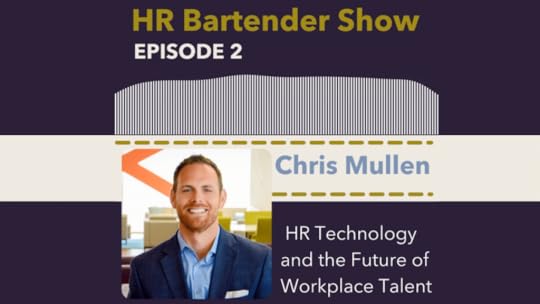
One of my first HR jobs involved human resources information systems (HRIS). We had a company-developed HRIS and my role was to play liaison between system users and the technology department. Users would tell me about the system features they wanted and/or needed. I would convey those to the technology department, who would add it to the system. Then I would test it, write user specifications, and help with implementation.
Human resources technology has improved (a lot!) since then, but what hasn’t changed is the necessity for organizations to have up-to-date technology. That’s what this episode of The HR Bartender Show is all about. The importance of giving employees effective technology.
Chris Mullen is executive director for The Workforce Institute and strategic advisor at Ultimate Kronos Group (also known as UKG), assisting clients with their human resource strategies. Prior to joining UKG, he was director of human resources at the University of Colorado Boulder. Chris has earned the Senior Professional in Human Resources (SPHR) certification from the HR Certification Institute (HRCI) and is a Senior Certified Professional from the Society for Human Resource Management (SHRM). He has a Ph.D. in Higher Education and Leadership with research on how mobile technology impacts work-life negotiation.

Technology is a tool to help us. It’s not a replacement for human interaction. In fact, it’s time for organizations to realize that the real return-on-investment technology offers is its ability to be a key differentiator to employees and customers.
Connect with Chris Mullen
LinkedIn: https://www.linkedin.com/in/chrismmullen/
Twitter: https://twitter.com/chrismmullen
Personal Website: http://chrismullen.org/
During the show, Chris mentioned a couple of articles about apprenticeships and gray-collar employees. Here are links to those articles: “Apprenticeships are Paying Off Big for Some” and “How Apprenticeship, Reimagined, Vaults Graduates into Middle Class”.
Episode 2 – Chris Mullen Show Notes
Episode 2 – Chris Mullen Transcripts
Thanks for listening to our podcast. This season of the HR Bartender show is brought to you by our friends at Ultimate Kronos Group (UKG), a leading global provider of human capital management, payroll, HR service delivery, and workforce management solutions.

You can subscribe to the HR Bartender show on Apple Podcasts, Spotify, Google Podcasts, Stitcher, and TuneIn. And we would absolutely love it if you would leave a review.
If you enjoyed this episode, be sure to check out other episodes on our podcast page.
The post The Future Workplace [Episode 2]: Technology Is an Organizational Differentiator appeared first on hr bartender.






Sharlyn J. Lauby's Blog
- Sharlyn J. Lauby's profile
- 10 followers



